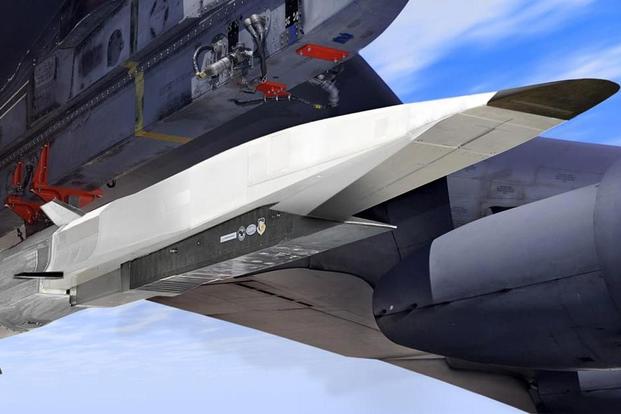NATIONAL HARBOR, Maryland -- In the hypersonics arms race with China and Russia, Aerojet Rocketdyne has teamed with prime contractor Lockheed Martin Corp. to develop a cruise missile with Mach 5, or five times the speed of sound, as its minimum goal.
Aerojet Rocketdyne is involved in "taming the physics" of the propulsion system for a missile that will fly faster than existing air defenses' ability to keep track, said retired Army Col. Steve Warren, an Aerojet spokesman.
Warren pointed to Aerojet's previous work on the X-51A, a hydrocarbon-fueled and scramjet-powered cruise missile prototype that was the first to achieve hypersonic speeds in 2013.
A Mach 5-plus cruise missile is the Defense Department's "top technical priority" in the race for hypersonics dominance, Warren said Monday at the Aerojet Rocketdyne exhibit on the floor of the Air Force Association's Air, Space and Cyber Conference in National Harbor, Maryland.
Related: Read all about the Air, Space and Cyber Conference
In April, the Air Force chose Lockheed Martin to design and build a prototype of a new hypersonic cruise missile that flies faster and farther than the X-51A. It's to be called the "Hypersonic Conventional Strike Weapon."
In addition to speeding up hypersonics research, the contract, which could be worth up to $928 million, is intended to "explore the art of the possible and to advance these technologies to a capability as quickly as possible," Air Force spokeswoman Ann Stefanek said at the time.
In December, Russian President Vladimir Putin boasted of his nation's advances in hypersonics, showing off what he said was a Mach 10 hypersonic cruise missile that could fly over the South Pole to avoid U.S. northward-pointing defenses.
U.S. officials are skeptical of Putin's claims. In April 2018, in testimony before the House Armed Services Committee, Dr. Michael Griffin, the under secretary for research and engineering at the Defense Department, said China poses the larger threat in hypersonics.
"The most significant advance by our adversaries has been the Chinese development of what is now, today, a pretty mature system for conventional prompt strike at multi-thousand kilometer ranges" with hypersonics, he said. "We will, with today's defensive systems, not see these things coming."
Because of the top secret nature of the work, Warren said he could not discuss details on the propulsion system or development of the alloys needed to withstand the stresses of hypersonic speeds.
Editor's Note: This story has been updated to clarify the date of testimony.
-- Richard Sisk can be reached at Richard.Sisk@Military.com.
Read more: Air Force Ad Campaign Will Leverage Space Force Buzz to Drive Recruitment












